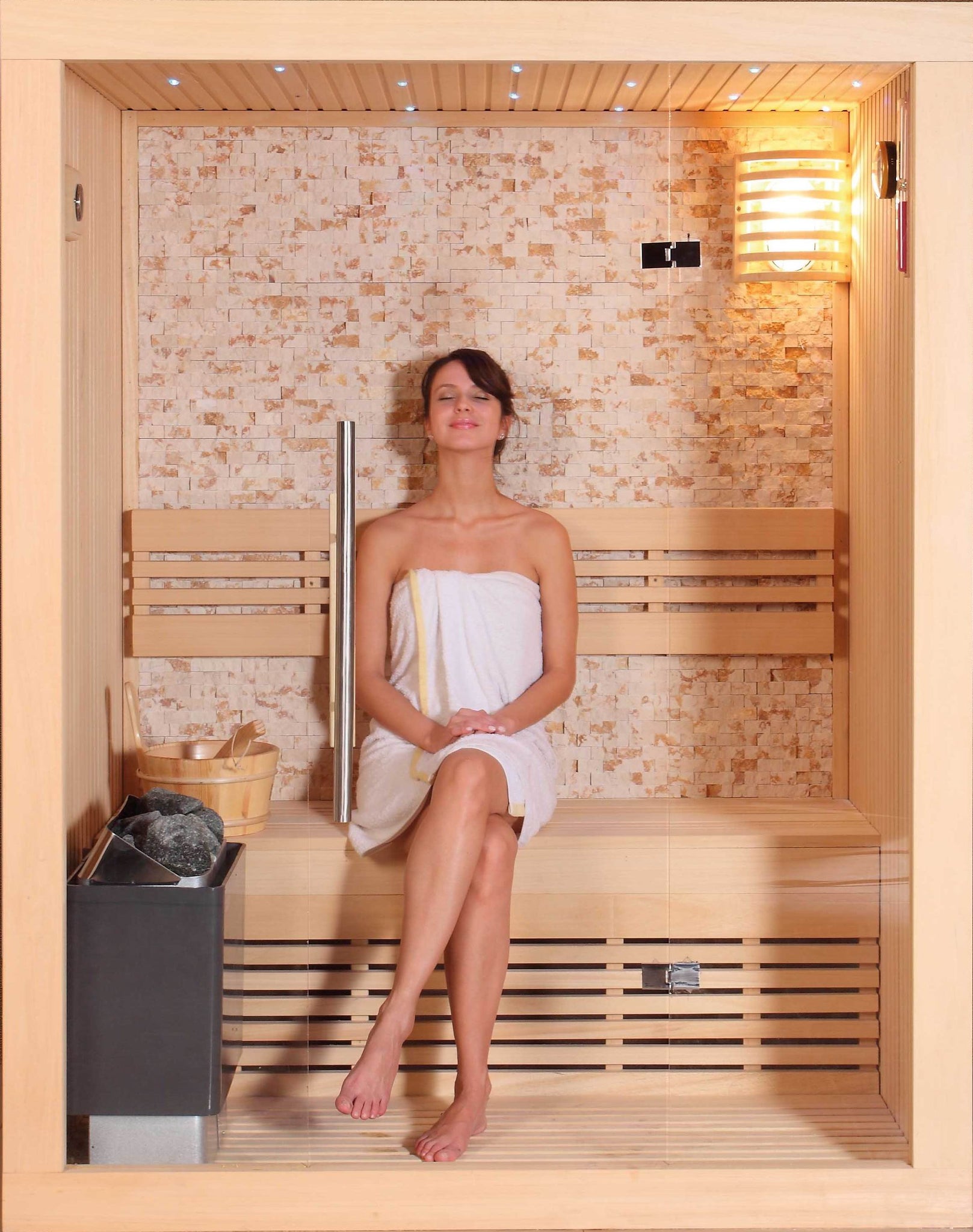Traditional Sauna Fundamentals Explained
Table of ContentsAll About Traditional SaunaFascination About Traditional SaunaTraditional Sauna Things To Know Before You Get This5 Easy Facts About Traditional Sauna DescribedUnknown Facts About Traditional Sauna
A lot of the weight shed in a sauna is water loss and is re-gained upon rehydrating. However, certainly sauna can be a fundamental part of a healthy weight loss program. To look at the differences in between standard and IR saunas, I will certainly divide these right into proven, theoretical, and fabricated differences.Thus, the best point in the saunawhich is at the ceiling straight over the sauna heateris normally in between 185 and 190 F. Claims that a conventional sauna surpasses 200 F is just not true and not appropriate for electric saunas marketed in the United States. The temperature for a far-infrared sauna is typically established between 120 and 140 F; however, unlike the conventional sauna, the goal in and IR space is not to attain a heat.

When a standard sauna has been properly warmed, the sauna walls are cozy, the air temperature has accomplished set temperature and the rocks are incredibly heated. As an intriguing side note, the warmed walls and the rocks are giving off far-infrared warmth, integrated with the heated air, to create an "wrapping up heat".
Traditional Sauna - Questions
When the high temperature is attained, the elements cycle on and off to preserve the high temperature. Most standard sauna customers delight in putting water over the rocks to create heavy steam to elevate sauna moisture degrees. The benefits of pouring water over the rocks include: making the space a lot more comfortable, dampening the nasal passages, and allowing the use of aromatherapy by blending crucial oils with the water.

When the power gets in the body, it creates read this article the body temperature level to raise and ultimately causes sweating. In an infrared sauna it is necessary for the emitters/heaters to stay on nearly regularly. Considering that there is no mass of rocks to keep warmth, the sauna will cool if the emitters shut down.
The smart Trick of Traditional Sauna That Nobody is Discussing
As discussed above, the sauna bather in an infrared room intends to position himself before running emitters to get optimal gain from the warmth. The heating time for both rooms can be really different, relying on how the areas are utilized. For a typical sauna, a bather ought to enable 30-40 minutes for the area to achieve a desired temperature level and to appropriately pre-heat the rocks.

A well created sauna will generally accomplish a temperature level of 150-160 F in regarding 30-40 minutes. For hotter temperature levels, the room may need to heat for a longer duration.
To some, 15 mins was "thrown away" while the infrared energy heated up the timber panels as opposed to heating a body, while others find a pre-heated room to be a lot more comfy and think a raised beginning temperature level is necessary to begin perspiring. The length of recommended use look at this web-site for every space is around the same (10-15 minutes per session); however, due to the reduced air temperature levels and the capacity to really feel the results of infrared warmth quicker than a conventional sauna, it is not unusual for a person to spend a total of 20-30 mins in an infrared sauna.
The 7-Minute Rule for Traditional Sauna

The typical cost per kWH of power in the U.S. is about $0.11, so a 4.5 kW heating system will certainly cost around $.50 to compete one hour, if the heater runs constantly for one hour. Commonly a sauna heating unit will certainly compete 75% of the first hour and 50% of subsequent hours on given that the aspects cycle once the established temperature level is achieved.
A two person far-infrared space is generally literally smaller than a typical sauna, commonly concerning 4' x 4' or smaller sized. The IR heating system is generally 1.5-1.7 kW utilizing a 120 volt 15 amp plug-in solution. Because the space can be utilized earlier than a sauna area, we will assume the room is used for to of an hour consisting of warm up time.
There is a rarely gone over distinction in the social experience between the two rooms. While our society has actually shed a few of the social benefit of the standard sauna experience, it can be extremely socially gratifying (Traditional Sauna). From family members time in the sauna, to heart-felt discussions with better halves, to sauna partiesthe typical sauna experience can lead to intimate interacting socially
The 6-Minute Rule for Traditional Sauna
Many greater end infrared spaces include tinted light therapy, audio systems and full-glass fronts. The size of many areas enable 2 people to pleasantly make use of the space, while some styles may enable a 3rd or fourth person to make use of the room. Custom infrared areas are also available, with area sizes available approximately 7' x 8' x 7' high.